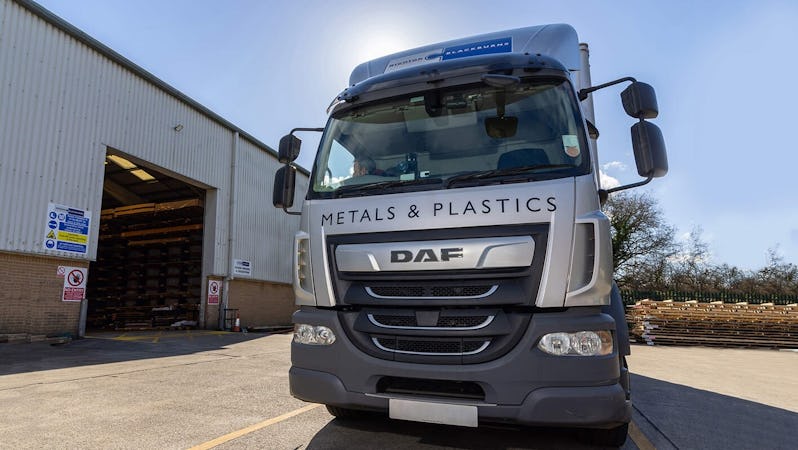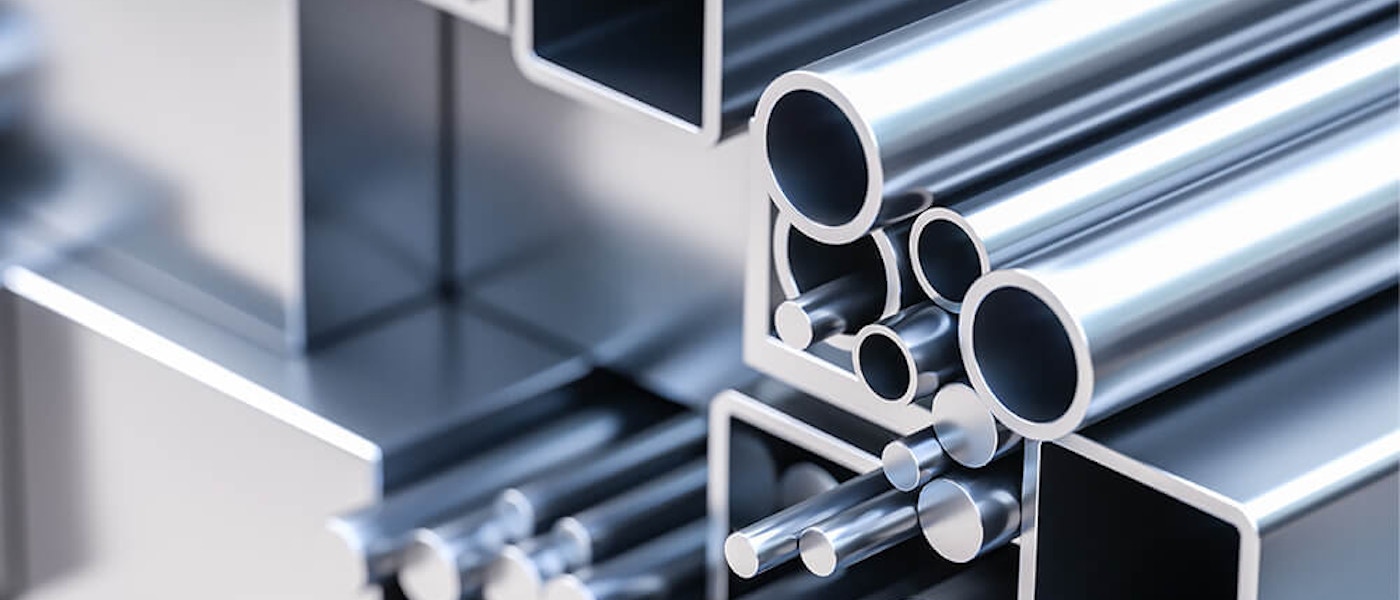Properties of Aluminium
Aluminium offers a number of advantages over other metals due to its specific properties. It also offers economic benefits as aluminium is inexpensive compared to alternatives.
Despite being the most commonly occurring metal in the Earth’s crust, aluminium proved elusive from human discovery until the 19th century. Most commonly found as a component of bauxite ore, it actually makes up 8% of the crust of our planet. Despite only being isolated in metallic form in 1824, aluminium has been used in compounds for millennia.
Since the process to economically produce aluminium at industrial scales was discovered in the 1880s it has become the second most widely used metal after steel. Over 60 million tonnes of aluminium were produced worldwide in 2023, around a third of which is made by recycling previously refined metal. Recycling aluminium is environmentally, economically, and practically sensible, since it takes 5% of the energy to recycle compared to the 14,000 kWh needed to refine 1 tonne of new aluminium. The quality of recycled aluminium is identical to that of freshly refined.
In its pure state, aluminium is soft and highly ductile, while also having great resistance to corrosion making it widely used for foil. Pure aluminium is also highly conductive both thermally and electrically, meaning it is also used extensively for electrical applications where it is cheaper and more efficient to use than copper. Alloys of aluminium give it the strength to be useful for countless applications and it has a strength to weight ratio far superior to other engineering metals such as steel.
The specific alloying elements can widely vary the properties of aluminium. All grades of aluminium alloy have specific properties such as light-weight, strength, corrosion resistance, conductivity, or ease of forming and welding. This flexibility combined with the low cost and ready availability of aluminium is what drives its use in an ever-growing number of uses.
Righton Blackburns offer a huge range of aluminium grades in a variety of tempers and forms, including sheet, plate, tube, bar, box section, angle, and extrusions. We stock a range of premium quality standard and bespoke aluminium profiles in a range of alloy specifications from 0.012kg/m to 268kg/m and a fast turnaround service on new dies and samples.
Aluminium offers a number of advantages over other metals due to its specific properties. It also offers economic benefits as aluminium is inexpensive compared to alternatives.
See our selection of aluminium alloys developed for aerospace applications
Widely used in high-voltage power lines due to its ability to conduct better than copper by weight, series 1000 and 6000 aluminium alloys are especially useful in this capacity. Cost implications also mean aluminium is gaining wider usage in domestic wiring as well.
Aluminium also conducts heat very well, making it a popular choice for cookware as it heats up quickly and evenly, while also being lightweight compared to other metals.
All aluminium alloys are resistant to corrosion, finding widespread use in maritime applications due to their resilience to seawater. Aluminium is also used in chemical and food industries, where its inherent anti-corrosion properties are invaluable. Some grades are more resistant than others, depending on the alloying elements. See our selection of aluminium alloys developed for marine applications
Second only in being reflective to light to silver, which reflects 95% of visible light, aluminium comes in at a very respectable 90%. Considering the cost implications, aluminium is widely used for mirrors both for domestic purposes and optical applications. Aluminium also finds use reflecting heat in architectural insulation or thermal blankets. Aluminium's thermal characteristics also make it popular in mobile phone construction.
Aluminium is widely used in the food and pharmaceutical industries, for packaging, process plant, and even cookware due to the fact that it is completely non-toxic and does not taint foodstuffs in contact with it.
Aluminium is widely used in transport, packaging, food and chemical processing, architecture, energy generation and electrical transmission. The specific alloy used depends on the specific properties needed.
Powered flight began with aluminium, as the engine of the Wright Flyer was made from aluminium to keep the weight as low as possible. Since then, aluminium has been used extensively in aerospace due to its exceptional strength-to-weight ratio.
This property also makes aluminium alloys desirable in all sort of vehicles, from the humble bicycle to the biggest ocean liner. The corrosion resistance of aluminium makes it desirable for vehicle components as it extends the lifespan and the recyclability means the lifetime costs and environmental impact is minimised.
See our selection of aluminium alloys developed for aerospace applications
The light weight of aluminium alloys mean they are widely used in sheet, plate, and extrusions in shipbuilding. Couple the strength-to-weight ratio with the inherent resistance to the corrosion of seawater, and you can see why aluminium is so popular.
The reduction in weight in the superstructure improves stability of ships of all sizes, as well as giving a noticeable increase to fuel efficiency. In high-performance vessels, such as hovercraft or surface planing boats, the lighter weight of aluminium makes it essential.
Other applications include coastal and off-shore structures due to its longer life, including many components of oil rigs and bridges. The most popular aluminium grades in marine applications are the 5000 and 6000 series.
See our selection of aluminium alloys developed for marine applications
A combination of aluminium’s corrosion resistance and fact that it is impermeable makes aluminium ideal for many food packaging applications. Drinks cans alone make up 15% of all aluminium use worldwide each year.
A combination of long life, corrosion resistance, and aesthetic value mean aluminium alloys find plenty of use in buildings. Doors, windows, roofing, and cladding are all popular uses that play off the ability of aluminium to shrug off the elements. The attractive finishes available along with aluminium’s strength mean it is also used in balustrades and railings.
In industrial settings aluminium is a popular choice for treadplate, due to its resistance to both corrosion and wear-and-tear.
One of the most popular uses of aluminium is in foil form. Benefits of aluminium foil include its resilience, especially to water, oils, gases, solvents, and light make it ideal for packaging or insulation.
Aluminium foils are widely used in the food and pharmaceutical industries for packaging and protection. It’s also used for insulation, both thermally and for lower-cost electromagnetic shielding against frequencies in the 30 to 100 MHz range.
There are many other uses for aluminium, although these only represent a fraction of all the aluminium used annually. Aluminium is a popular choice for ladders and sports equipment, where the exceptional strength-to-weight ratio is a huge plus. High-pressure vessels and gas cylinders are often made from aluminium thanks to its impermeability.
Aesthetic uses of aluminium also include furniture, both indoor and outdoor. It is also used for road signs, thanks to it strength and corrosion resistance.
Fresh aluminium is refined from bauxite ore, which is widely found especially in Australia, Central and South America, Asia, and Africa. The bauxite is first refined into aluminium oxide (referred to as alumina), which is known as the Bayer process and was invented in the late 19th century by Carl Josef Bayer. Around two tonnes of bauxite are needed to produce one tonne of alumina.
The alumina is then refined into metallic aluminium using the Hall-Héroult process. This was independently discovered by Charles Hall and Paul Héroult as the most effective means of refining aluminium in large quantities. The process requires a lot of electricity as it involves electrolytically separating the aluminium oxide at very high temperatures.
Because extracting the aluminium requires so much electricity, it makes recycling aluminium economically and environmentally attractive. Melting down and re-using aluminium requires only a fraction of the energy to refine it in the first place.
Experienced multi-product specialists
In-house state of the art processing facilities
Large fleet of bespoke delivery vehicles
Value-added services provider
Standard, non-standard and customer-specific material

Opening Times
Experienced multi-product specialists
In-house state of the art processing facilities
Large fleet of bespoke delivery vehicles

Opening Times

